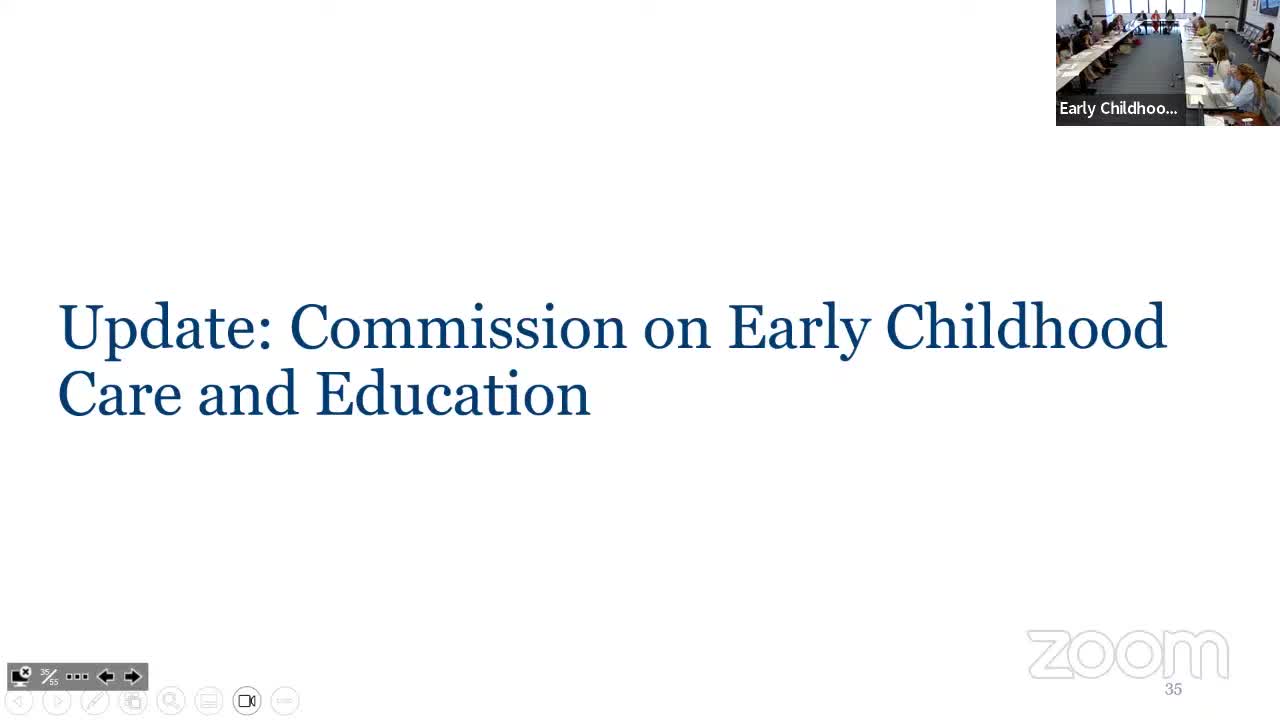Early Childhood Commission reports 7666 children on childcare subsidy wait list
September 13, 2024 | Department of Education, Executive Agencies, Executive, Virginia
This article was created by AI summarizing key points discussed. AI makes mistakes, so for full details and context, please refer to the video of the full meeting. Please report any errors so we can fix them. Report an error »

The Virginia Department of Education held a meeting on September 13, 2024, focusing on early childhood education and child care subsidy issues. The discussions centered around the integration of longitudinal data systems and the current status of child care subsidies in the state.
The meeting began with a presentation on the importance of connecting students to their educational experiences through a longitudinal data system. This system aims to track students from kindergarten onward, allowing for a comprehensive understanding of their educational journey over time. The data collected will help connect various agencies, including the Department of Social Services (DSS) and Community Behavioral Health (CBH), using a de-identified identifier for tracking purposes.
A significant portion of the meeting was dedicated to addressing concerns about the child care subsidy program. A participant raised a question regarding whether the subsidy had been halted until January 1, 2025, and if municipalities could still utilize existing funds to enroll families in the program. The response clarified that as of September 1, there were approximately 7,666 children on the child care subsidy waitlist across the state, affecting infants, toddlers, preschoolers, and school-age children.
The discussion highlighted that 93 out of 120 communities in Virginia currently have a waitlist for child care subsidies, with the number of children on these lists fluctuating as families transition in and out of the program. The state is working to maximize its funding and ensure that slots are reallocated efficiently, prioritizing children aged birth to five. However, it was noted that the funding situation remains dynamic, with concerns that there may not be sufficient allocation for the current year.
The meeting concluded with a commitment to share relevant data slides with participants, ensuring that all stakeholders remain informed about the evolving landscape of early childhood education and child care subsidies in Virginia. The ongoing efforts aim to address the needs of families and improve access to quality child care services across the state.
The meeting began with a presentation on the importance of connecting students to their educational experiences through a longitudinal data system. This system aims to track students from kindergarten onward, allowing for a comprehensive understanding of their educational journey over time. The data collected will help connect various agencies, including the Department of Social Services (DSS) and Community Behavioral Health (CBH), using a de-identified identifier for tracking purposes.
A significant portion of the meeting was dedicated to addressing concerns about the child care subsidy program. A participant raised a question regarding whether the subsidy had been halted until January 1, 2025, and if municipalities could still utilize existing funds to enroll families in the program. The response clarified that as of September 1, there were approximately 7,666 children on the child care subsidy waitlist across the state, affecting infants, toddlers, preschoolers, and school-age children.
The discussion highlighted that 93 out of 120 communities in Virginia currently have a waitlist for child care subsidies, with the number of children on these lists fluctuating as families transition in and out of the program. The state is working to maximize its funding and ensure that slots are reallocated efficiently, prioritizing children aged birth to five. However, it was noted that the funding situation remains dynamic, with concerns that there may not be sufficient allocation for the current year.
The meeting concluded with a commitment to share relevant data slides with participants, ensuring that all stakeholders remain informed about the evolving landscape of early childhood education and child care subsidies in Virginia. The ongoing efforts aim to address the needs of families and improve access to quality child care services across the state.
View full meeting
This article is based on a recent meeting—watch the full video and explore the complete transcript for deeper insights into the discussion.
View full meeting
